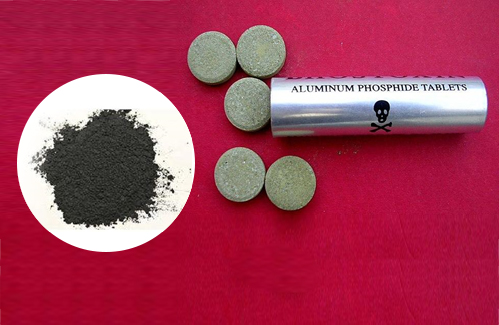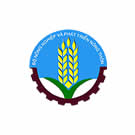- Folder Technical News
- Views 2832
- Last Updated 18/07/2024
Pesticides play an important role in agriculture of every country in the world. However, pesticide residues in food and agriculure products have been still reported by a number of studies or food inspection activities. It is realized that pesticide residues may expose to acute and chronic harmful effects to the human health and the ecosystem as well. Therefore, screening and detecting pesticides in food is vital in ensuring food safety, environment, ecology and meeting the requirements of food export and trade.
1. What is pesticide?
The natural or synthetical pesticides are used to prevent and eliminate harmful organisms to crops and agricultural products, and to regulate plant growth. In addition, pesticides also have the effect of repelling or attracting harmful organisms to destroy them and are also used in the preservation, storage and transportation of agricultural products after being harvested.

Figure 1. Farmers using pesticides on crops
According to circular 19/2022/TT-BNNPTNT, there are variety groups of pesticides used today, such as:
- insecticides (acetamiprid, carbofuran, etc.)
- fungicides (azoxystrobin, propiconazole, tebuconazole, etc.)
- herbicides (2,4-D, atrazine, buturon, butachlor, etc.)
- rodenticides (Brodifacoum, Diphacinone, etc.)
- molluscicides (Niclosamide, Clonitralide, etc )

Figure 2. Structural formulae of some compounds in the group of pesticides
2. Effects of using food containing pesticide residues over the maximum residue level
Maximum Residue Level (MRL) is the maximum amount of a toxic compound that is allowed to remain in a food without causing harm to humans and animals when consume.
There are many pesticides on the market that are produced from chemical, biological, herbal active ingredients, etc. Each type of pesticide has a maximum residue limit (MRL) specified for each type of food. When pesticides exceed the MRL threshold in food, it can be dangerous to consumers.
Most pesticides are toxic to humans and warm-blooded animals at different level. According to the characteristics, pesticides are divided into two categories: acute and chronic poisons [1].
- Acute toxicity: The degree of toxicity depends on the amount of drug entering the body. At below lethal doses, the pesticides are gradually broken down and excreted. This category includes pyrethroid compounds, organophosphate compounds and carbamates. In the acute form of pesticide poisoning, the patient will have visible symptoms such as vomiting, headache, dizziness, and sweating. Toxins will be metabolized through the liver, causing neurological disorders, insomnia, poor memory, blurred vision, hearing loss, and physical weakness. In pregnant women, it can easily cause miscarriage, premature birth, and congenital deformities in children.
- Chronic toxins: have the ability to accumulate in the body for a long time because they are very stable, difficult to be broken down and excreted. This drug includes many compounds containing organochlorine, arsenic, lead, mercury. These are very dangerous compounds for human health, causing cancer of the liver, stomach and esophagus.
Pesticides can enter the body of humans and animals through many different ways; Usually through three main routes: inhalation, ingestion and direct contact. When exposed to pesticides, humans can experience acute or chronic toxicity, depending on the drug's effects.
Currently in Vietnam, the list of pesticides allowed to be used and banned from use in Vietnam is issued in Circular 19/2022/TT-BNNPTNT [2] and the circular regulating the maximum limit of pesticide residues in food is Circular 50/2016/TT-BYT [3]. Some pesticides banned from use in Vietnam in Circular 19/2022/TT-BNNPTNT are shown in Table 1.
Table 1: The list of pesticides banned from use in Vietnam
|
No. |
Substance name |
No. |
Substance name |
No. |
Substance name |
|
1 |
Aldrin |
10 |
Endosulfan |
18 |
Monocrotophos |
|
2 |
BHC, Lindane |
11 |
Endrin |
19 |
Parathion Ethyl |
|
3 |
Carbofuran |
12 |
Heptachlor |
20 |
Sodium Pentachlorophenate monohydrate |
|
4 |
Chlordane |
13 |
Isobenzen |
21 |
Pentachlorophenol |
|
5 |
Chlordimeform |
14 |
Isodrin |
22 |
Phosphamidon |
|
6 |
DDT |
15 |
Methamidophos |
23 |
Polychlorocamphene |
|
7 |
Dieldrin |
16 |
Methyl Parathion |
24 |
Trichlorfon (Chlorophos) |
|
8 |
Captan |
17 |
Captafol |
25 |
Hexachlorobenzene |
|
9 |
2,4,5-T |
|
|
|
|
3. Testing pesticide residuces at the National Institute for Food Control
Currently, with the lastest equipment and skilled staff, the National Institute for Food Control has developed a method that can screen multi residue of pesticides by high resolution liquid chromatography equipment LC-HR/MS Dionex Ultimate UHPLC + Q- Exactive Orbitrap MS of Thermo Scientific (Figure 3) - one of the most modern chromatographic analysis equipment. Combined with substance libraries from mzCloud, Chemspider, Masslist, etc., it is possible to screen and identify unknown compounds with accuracy of less than 5ppm. This method can be applied to the quantification of pesticides in food samples circulating on the market. The screening sample analysis process is designed to include the analysis of blank samples, test samples, and positive control samples. The data were analyzed using Compound Discoverer 3.1 software with evaluation steps to find groups of substances, as shown in Figure 4.

Figure 3. High-resolution liquid chromatography-mass spectrometry system in the National Institute for Food Control

Figure 4. Screening process for a group of pesticides using Compound Discoverer software
According to preliminary research by the National Institute for Food Control on pesticide residues in food, applied over 60 samples on the market. The results show that the most common groups of pesticides in food are acetamiprid, azoxystrobin, difenoconazole, tebuconazole, propiconazole, tricyclazole and isoprothiolane. However, all the pesticides detected were not above the MRLs or not on the list of regulated in Vietnam. This does not mean that these residues are not harmful to human health when exposed for a long time without control. This is also a warning to the authorities about the use of pesticides and their residues that can affect consumer health and the export of Vietnamese food to other markets of high demands as Japan, Europe, America, etc.
In order to protect the health of the community, strengthening the management and control of food quality, hygiene and safety control is a necessary task. Therefore, testing pesticides in food play a very important role to control the production process and evaluate product quality; strengthen the management, prevention and limitation of residual effects of pesticides and chemicals in food. It is recommended that people pay attention and take responsibility in controlling and managing the amount of chemicals and pesticide residues in order to improve the quality and value of products and goods and the health of the community.
Author: Luu Thi Huyen Trang- Chemical Residues and Contaminants Laboratory-National Institute for Food Control
References
[1]. Trần Quang Hùng (1999), “Thuốc bảo vệ thực vật”, Nhà xuất bản nông nghiệp.
[2]. Bộ Nông nghiệp và Phát triển nông thôn (2022), “Thông tư 19/2022/TT-BNNPTNT về Danh mục thuốc bảo vệ thực vật được phép sử dụng tại Việt Nam và Danh mục thuốc bảo vệ thực vật cấm sử dụng tại Việt Nam ”.
[3]. Bộ Y Tế (2016), “Thông tư 50/2016/TT-BYT Quy định mức tối đa tồn dư thuốc bảo vệ thực vật trong thực phẩm”.
Contact for consultation and testing
- Headquarters: Scientific and Technology Service Center - National Institute for Food Control
Address: 65 Pham Than Duat, Mai Dich, Cau Giay, Ha Noi
Hotline: 0084 85 929 9595
Email: baogia@nifc.gov.vn/ nhanmau@nifc.gov.vn
- Representative office in Ho Chi Minh City
Address: Tan Cang Port - Cat Lai, Room A102, Gate B Cat Lai Port, 1295B Nguyen Thi Đinh street, Cat Lai ward, Thu Duc, Ho Chi Minh city
Telephone: 0084 28.37.400.888/ Hotline: 0084 918.959.678 (Mr. Nghi)
Email: baogia@nifc.gov.vn/ vpsg.nifc@gmail.com
- Representative office in Hai Phong City
Address: Number 1 Ngo Quyen Street, Hai Phong city
Telephone: 0084 225.8830316/ Hotline: 0084 983.300.226 (Ms. Thuong)
Email: vphp@nifc.gov.vn



















